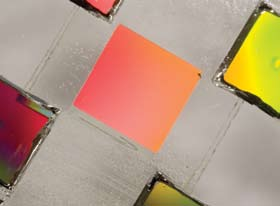In conventional injection molding, a hot polymer is injected into a much cooler mold. As the molten polymer hits the surface of the mold, a thin layer solidifies almost instantly, and the remaining material flows underneath the new skin into the rest of the mold.
In micro- and nanoinjection molding, a mold is so small that if a skin layer forms on its surface, the polymer would have no room to flow through. John Coulter has solved that problem with real-time dynamic thermal control, heating the mold to a temperature higher than that of the molten polymer, filling the mold and then cooling it.
Coulter, a professor of mechanical engineering and mechanics, seeks reductions not just in the size of molded features and devices but also in the cost of fabrication.
“As the market demand for nanoscale devices grows, micro- and nanoscale injection molding will be crucial.”
Coulter is developing theoretical models to explain the new phenomena that are being observed. At the micro- and nanoscale, he says, traditional assumptions in fluid mechanics do not apply.
Only two groups in the world – one of them Coulter’s – have managed to fabricate nanomolded structures as small as 50 nm across. He believes even smaller product features are possible.
“What is the limit?” Coulter says. “None of us really knows, but we have to start thinking of the actual size of the molecules we’re dealing with. Our group is trying to get to 25 nm, which I think is achievable."

